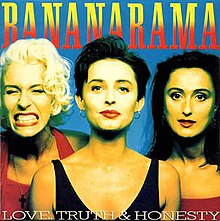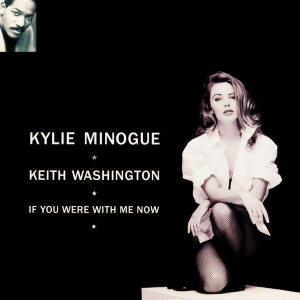Even in this day and age when there appears to be a growing re-evaluation of Stock Aitken Waterman, many people still write them off as working with supposedly "lesser" artists. True, there were some artists they worked with whose musical ability was perhaps overshadowed by other qualities, but SAW did work with a number of big name artists. Some of those collaborations -- such as Donna Summer and Cliff Richard -- are well-known, whilst others are not widely known.
Perhaps one of the more surprising collaborations was their work with Debbie Harry, best known as the lead singer with new wave rock band Blondie.
SAW would produce two tracks with Harry; one which just missed the UK Top 40, whilst the other remains unreleased to this day. It's an interesting story which resulted in two great tracks that show a different side to both SAW and Harry.
Harry -- and Blondie -- first came to prominence in 1978. Her unique voice, her stunning good looks and her attitude made a huge impact on the worldwide music scene, but there was much more to Harry than her sex symbol status suggests. Along with Blondie guitarist (and boyfriend) Chris Stein, Harry co-wrote many of the songs -- resulting in huge anthems such as Atomic, Sunday Girl and Heart of Glass.
The band enjoyed huge success until 1982, when they disbanded (although the have reunited in recent years). Post-Blondie, Harry spent time caring for Stein during a serious illness, but eventually re-ermeged to relaunch a solo career (which had commenced with 1981's KooKoo album during a Blondie hiatus) in 1986 with a new album, Rockbird.
In the UK at least, Harry's return to prominence came with the release of French Kissin' In The USA, a hypnotic midtempo, synth-led anthem which reached #8 in late 1986. The follow up, Free To Fall, couldn't match this success and stalled at #46. Eager to avoid losing the momentum created by French Kissin'..., Chrysalis Records looked to Rockbird for a suitable follow up.
In Love With Love is one of the album's stronger songs, composed by Harry with Stein, and produced by former J Geils Band keyboard player Seth Justman. Apparently a sequel, in lyrical terms at least, to the Blondie hit Heart of Glass, In Love With Love is a delicate affair, with Eastern influences to the arrangement; aside from strident piano at the start and some effective rhythm guitar mid-track, it's predominantly synth-led with an emphasis on arpeggio sounds. Whilst Justman's version is pleasant, it's very understated and lacks the commercial punch of French Kissin'...
A decision was made to create a new version of the track for single release, and that task was assigned to Stock Aitken Waterman. It is unclear who made this decision and why, but given that French Kissin'... was a far bigger hit in the UK, it's likely that the decision was to build on that UK success, and certainly SAW's star was in the ascendant at this point.
What is also unclear is whether this is truly a new version of the track or a remix with additional production. Certainly, the credits on the single are "Produced by Seth Justman & Stock Aitken Waterman", and a listen to both versions would suggest there is little, if any, of the arrangement from the Justman version.
Whilst it is known that Harry did in fact travel to the UK to record vocals with SAW, it's unclear whether that was to record vocals for In Love With Love, and/or the second track this article will cover, so it may be that the vocals from the Justman version were used, hence his credit.
It is useful to listen to the original Justman version, then the SAW version. Obviously, different people will have different preferences, but what one can't deny is that the SAW version just explodes out of the speakers.
Original Seth Justman version
Stock Aitken Waterman version
Kicking off with an earshattering drum fill, the SAW version is driven by a pulsating synth riff, with electric guitars squealing away in the background. Pleasingly full snare sounds work hand-in-hand with handclaps to deliver a powerful rhythm track, whilst the "Heart of fire" chorus refrain uses a spooky, swirling synth pad to provide a haunting effect.
SAW also manage to create a much-needed lift into the chorus, which is something the album version lacked. Whilst its a predominantly electronic production, the presence of electric guitars and strong percussion really help to give the track a fuller, heavier sound than many SAW tracks.
Unfortunately, the SAW version of In Love With Love didn't fare much better than Free To Fall, peaking at #45 in the UK. A disappointing result for a strong record, which deserved a wider hearing.
This muted success, however, did not prevent a further collaboration between Harry and SAW, albeit one that still remains officially unavailable to this day.
Intended for the soundtrack of 1987 US movie Summer School, SAW produced a version of the Michael Jay & Rick Palombi composition Mind Over Matter, with Harry on lead vocals. Jay was by this time establishing himself as a pop writer and producer in the UK, thanks to the success of his collaborations with Five Star, most notably with tracks like If I Say Yes and The Slightest Touch.
Mind Over Matter itself was originally recorded by Nikki Leeger and released on RCA Records in 1986, but failed to make any in-roads to the chart. Produced by Chris Neil, this version is a US-styled pop rock, with an early 80s synth sound to it. The arrangement is sparse and simplistic in terms of instrumentation, certainly compared to the later SAW versions, whilst Leeger's dramatic, almost operatic vocals impress. The track is enlivened by some nice guitar work, and tricksy drum programming.
That said, it is arguable that the Leeger version did not capitalise on the strong pop sensibilities of the song, and whilst an interesting version, one can perhaps understand why it did not garner a more populist following.
But, as with In Love With Love, SAW were able to bring out the best in the song for the Harry version.
Opening with a sinister, drawn-out gong-like sound, the track explodes with a metallic clang and some brilliant wailing electric guitar. This dark intro gives way to dramatic swirling pads and a catchy synth riff which recurs through the track.
Harry's vocals in the verse are augmented by distorted, haunting vocal samples, whilst other incidental sound effects accompany the bridge, with orchestral hits heralding the chorus.
And it's a great chorus. "We're doing what can't be done / Mind over matter / There's no battle that can't be won / Mind over matter" cries a defiant Harry as she belts out the song in her trademark style.
The instrumental break gives us an early example of the sampled vocal locs that would later become a SAW staple, whilst the closing chorus refrain gives us more electric guitar.
As with In Love With Love, SAW give the track a rockier, heavier feel whilst retaining its pop sensibilities.
You get a real sense that this track would have given Harry a big hit, and pick up the momentum from the success of French Kissin' In The USA. However, record company issues scuppered the release; in a fascinating interview with Stephen Hill, Jay suggests that Harry's departure from Chrysalis Records to join Geffen meant that Harry's version of Mind Over Matter could not be issued as a single. [I would urge you to read Stephen's excellent article on the track and his insightful interview with Michael Jay].
The Harry version did finally emerge via the Internet about ten years ago, albeit in a low-quality copy initially, with a better quality version leaking a few years later. Hearing it even now, it is clear that this sounds like a hit record and would appear to have been a missed opportunity.
With Harry's version unable to be released, a decision was made to re-record the track with US female singer EG Daily and it is her version with featured on the Summer School soundtrack album.
Although the UK release carries the credit "Remixed by Stock Aitken Waterman", the Daily version was actually produced by SAW. Clearly, the bulk of the production is that of the Harry version, but with some modification to the arrangement.
Daily's raspy vocals suit the track and she pulls off a stirling performance, and if anything, this new version is possibly better than the Harry version. The production is punchier; it is less rocky but still possesses a heavier sound than many of the contemporaneous SAW productions of 1988 -- this may be down to the original production dating back to 1987.
Alas, this version didn't fare well in the UK Singles chart, just about scraping into the Top 100 at #96. But then Daily did not have the profile that Harry enjoyed, and again, one wonders if Harry's version would have gained wider exposure.
So, all in all, Debbie Harry's liaison with SAW was brief but ultimately fascinating. Further collaborations would have been welcome, but clearly this was largely a case of the record company hoping to benefit from a bit of the SAW midas touch to raise their artist's profile. It did result in two strong pop tracks, which may not have set the charts on fire but remain well regarded among hardcore SAW fans as they demonstrate a different take on the SAW sound.
References:
Stephen Hill, Interview with Michael Jay, rip-her-to-shreds website
http://www.rip-her-to-shreds.com/archive_exclusive_stephen_hill_3.php

:format(jpeg):mode_rgb():quality(40)/discogs-images/R-1531131-1306513876.jpeg.jpg)


